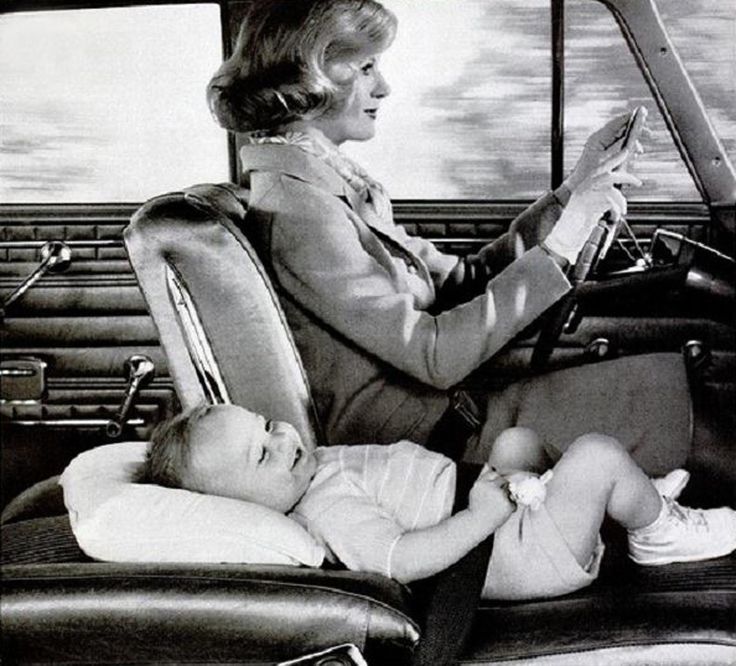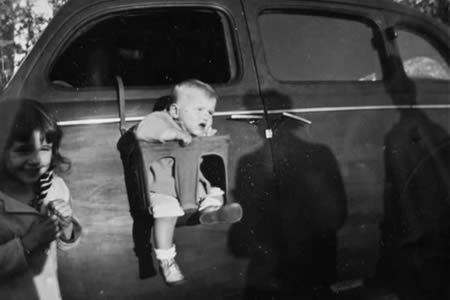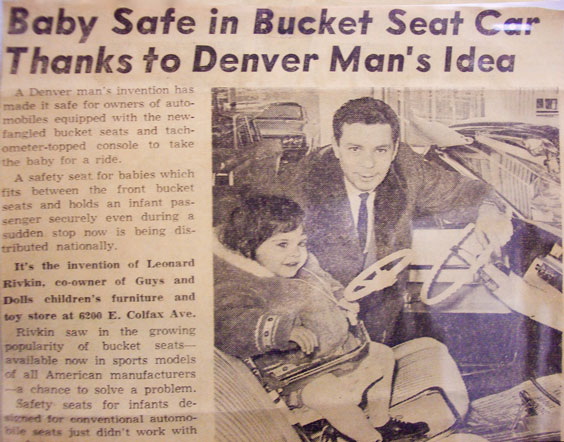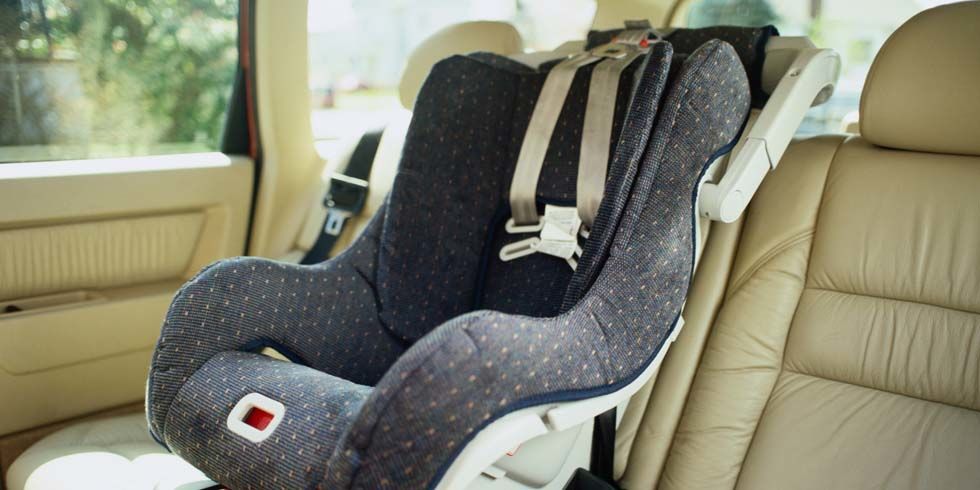According to Steven D. Levitt, economist, and author of “Freakonomics,” there is no reason to put children in forward-facing child seats after age two. According to peer reviews [read: science], Levitt is incorrect.
The child seat, which we often call a safety seat, was not first designed to keep the baby safe. It wasn’t that parents didn’t care. They didn’t know any better. The first seats for kids made baby easier to see.
By the 1960, amidst the upscaling of safety for adults with laws on the books about cars and seat belts, children came along. Two designs emerged with leveraged the new standard of the seatbelt in every car.
In time, we arrived at the modern requisite child safety seat, but it wasn’t without some bumps along the way.
Pre-1960s
Before safety seats, moms and dads had one need for baby; to sit still. The goal was not totally void of safety. A crawling baby would distract the driver without help.
Back then, a sling of sorts would do. Thus, the Bunny Bear Company introduced a sling model which would hook on the back of a seat.
As designs progressed, manufacturers included versions which gave the kids a view out the windows. Ironically, this would likely increase the likelihood of killing the child in the event of an accident.
The Revolutionary ’60s
In the 1960’s, the concept presented by forward-thinking manufacturers like Volvo and Tucker, seat belts, would go mainstream.
In 1962, two inventors set about to revolutionize car seating for kids. One design leveraged the belt to put the child in a rear-facing position, held down by a Y-belt. The other used the belt to put the kid in a metal frame.
Guess which one was more popular?
In 1968, Ford Motor Company came out with an inventive concept, the Tot-Guard. Ford claimed the restraint effective, but it lost the popularity and eventual regulations contest.
The Groovy ’70s

1971 NHTSA crash testing | youtube
The National Highway Traffic Safety Administration set the first standards for consumers. It was 1971. Drivers were to use child car seats, attached to the seat by the standard seat belts.
We were not yet crash testing models or mandating specifics about design. From a policing standpoint, we were not yet enforcing these new rules.
Anyone who grew up in the 1970s can tell you, there were rarely child car seats in any car. My older brother, when he was a toddler, rode disco-dancing on my mother’s lap while she drove.
She was probably smoking too.
The Sensible ’80s
Rules, schmules, in 1985 we had laws. The new law mandated that children under a certain age to sit in a proper child seat in the car. Police started enforcing these laws, but not with rigor, not at first.
By the 90s, the LATCH system came into existence. The LATCH system kept the seat in the proper position in the event of an accident.
After that, child safety seat laws went crazy. For parents today, they need a flowchart to know which seat is the right one for their kid. Today’s child seats even have expiration dates. New ones are not cheap. Recalls run rampant and people take them seriously.
The debates rage on about age versus weight as an indicator for seat size, front-facing versus back. We now break children into four groups, ranked 0-3 by mass.
In many ways, we suffer research overload. Because of this, we get people like Levitt, who is an otherwise trusted source of data, making crazy claims about car seats being irrelevant.
It’s safe to say that the culture of child safety has turned a corner in the last couple of decades.
Some would say we’ve jumped the shark, that we’ve gone full helicopter parent, but when it comes to the wellbeing of one’s children, there is no action unworthy of a parent’s attention.
Sources: goodhousekeeping.com, csftl.org




